California Inland Empire Council
High Adventure Awards
Introduction
Applications, Forms
CIEC High Adventure Awards for Scouts
Awards from other Councils
HIGH ADVENTURE activities will add an exciting element to your unitís program. The BSA HIGH ADVENTURE program offers guidance for countless pre-planned activities and a resource for new outing locations.
Aside from meeting the prerequisite for earning awards, the courses offer some of the best training experiences available to Scouters; providing the basics to new leaders and updates to veterans.
Manuals, which detail the current awards offered by all southern California councils, are available through your local scout shop.
The HIGH ADVENTURE TEAM (HAT) is a group of volunteer Scouters who are adventure enthusiasts working together to develop and improve additional opportunities for scouts, promote the High Adventure program and provide training to adult leaders. The CIEC team meets monthly and welcomes all registered Scouters to join them.
Applications, Forms
CIEC High Adventure Awards for Scouts
Awards from other Councils
HIGH ADVENTURE activities will add an exciting element to your unitís program. The BSA HIGH ADVENTURE program offers guidance for countless pre-planned activities and a resource for new outing locations.
- Scout leaders receive program content, and suggestions to take their youth on exciting outings.
- Cub Scout level HIGH ADVENTURE is age appropriate.
- Hiking and bicycling are key elements to the program for all ages. There are many activities that expose youth to local history, nature programs, and conservation and/or service projects.
- Many programs correspond to school curriculum. For example, El Camino Real for fourth grade California history.
- Venturing youth may take HAT classes toward their Ranger advancement.
- In order for scouts (and scouters) to earn the patches seen here, their outing must be led by a HAT (High Adventure Team) trained leader.
- The California Inland Empire Council HAT offers training scheduled throughout the year.
- Completing the L.O.S.T., Map and Compass, and Basic Backpacking courses makes you "High Adventure trained".
- LOST-Leader Outdoor Safety Training. This course covers planning, procedure and safety concerns for taking a group of scouts to more remote locations. (8 hour course)
- Map and Compass- A hands-on navigation workshop that teaches the theoretical and practical application of map and compass skills. (8 hour course)
- Basic Backpacking-This course covers the skills and equipment considerations for safe backcountry camping. An 8-hour course (1 day) followed by introductory backpacking weekend. Approx. 5 miles.
Aside from meeting the prerequisite for earning awards, the courses offer some of the best training experiences available to Scouters; providing the basics to new leaders and updates to veterans.
Manuals, which detail the current awards offered by all southern California councils, are available through your local scout shop.
The HIGH ADVENTURE TEAM (HAT) is a group of volunteer Scouters who are adventure enthusiasts working together to develop and improve additional opportunities for scouts, promote the High Adventure program and provide training to adult leaders. The CIEC team meets monthly and welcomes all registered Scouters to join them.
Use these forms to earn your High Adventure Award:
CIEC Scout High Adventure Awards
A High Sierras and Philmont quality trek, right here in Southern California! |
||||||||||||||||||||
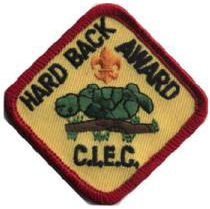 HARD BACK AWARD
HARD BACK AWARD
|
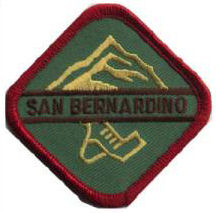 SAN BERNARDINO PEAK
SAN BERNARDINO PEAK
If individuals on this hike already have this award, the Weekend Hike in a National Forest Award can be earned. The hours hiked have to be completed, but the Peak climb is not necessary to earn this award The two main trail heads are Forsee Creek and Camp Angelus. Both have good parking. If Camp Angelus trailhead is used, this peak will give you a "C" peak for the Peak Bagger Award. Of the two, Forsee Creek Trail is shorter and slightly easier. There are Wilderness Camp areas off of each of the trails mentioned-above that will allow you to complete the required hiking hours. They both offer a place to camp with water (short hike from camp) and a base to hike the peak with only a "day" pack The camps are: Limber Pines Bench along the Camp Angelus Trail and Trail Forks Springs along the Forsee Creek Trail. |
|||||||||||||||||||
 MT. BADEN POWELL HIKE
MT. BADEN POWELL HIKE
|
||||||||||||||||||||
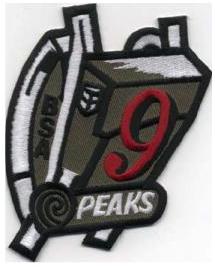 9 PEAKS HONOR AWARD
9 PEAKS HONOR AWARDThe 9 Peaks Award is an honor award for youth and their leaders who display exemplary conduct and meet the high standards of Scouting Spirit and Team Work. Scouts must be at least First Class or above. This is a strenuous trip. It is recommended that at least four days and three nights be allowed for completion. The leader should be confident that all Scouts and adults are fit and ready. For information on possible approach and descent routes, water sources, and seasonal considerations consult the CIEC 9 Peaks Award Booklet. Requirements:
|
||||||||||||||||||||
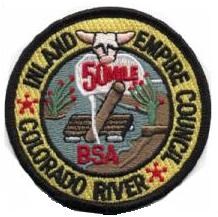 COLORADO RIVER 50 MILER
COLORADO RIVER 50 MILERAvailable to any registered member of the Boy Scouts of America who travel any 50-mile stretch of the Colorado River in a Canoe, unpowered boat, raft, or other inflatable.
|
||||||||||||||||||||
Purpose: To provide an incentive for troops to undertake canoe trips leading up to a Fifty-Miler, or the (San Diego Mission Bay) River Rat Award, or other long term canoe trips. Location: Any waterway permitting an overnight trip of sufficient duration afloat. Distance & Duration: An overnight canoe trip to a waterside campsite of approximately 6-7 hours afloat. Distances can vary depending on current, and wind conditions, etc. Requirements: Same as for Council Weekend Hiking awards, plus, each canoer must have passed First Class Swimming, be able to exit and enter a canoe from water, and have a knowledge of the basic canoe strokes and handling techniques. References: Canoeing Merit Badge Pamphlet and San Diego Council High Adventure Aid #101 "Canoeing the Colorado River". |
||||||||||||||||||||
 DE ANZA TRAIL
DE ANZA TRAIL
|
||||||||||||||||||||
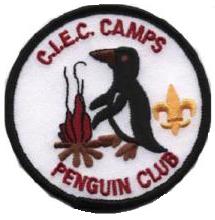 CIEC CAMPS PENGUIN CLUB
CIEC CAMPS PENGUIN CLUBAward Application It is recommended that at least one adult outing leader have training in winter camping prior to the campout. Due to National Policies, no Tigers, Wolfs or Bears may earn this award. The patch is available through your local Council Headquarters for any Webelos, Scout, or Scouter who meets the following requirements:
|
||||||||||||||||||||
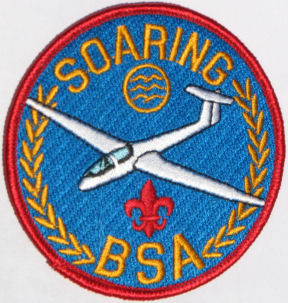 SOARING AWARD
SOARING AWARDThe BSA Flying Permit Application and the parental Consent for Aviation Flight do not replace the regular Tour Plan and Permission Slip. Both of these forms must be filled out in addition to the Tour Plan and securing Permission Slips for each Scout. Requirements:
|
||||||||||||||||||||
 MT. SAN ANTONIO PEAK AWARD
MT. SAN ANTONIO PEAK AWARDMt San Antonio is often called "OLD BALDY" or "MT. BALDY". This award requires three separate hikes of 10 to 16 miles each and includes climbing at least three peaks over 8000'. All participants should carry proper equipment and be physically fit. Requirements:
|
||||||||||||||||||||
 SAN BERNARDINO TRAILS AWARD AND SEGMENTS
SAN BERNARDINO TRAILS AWARD AND SEGMENTSThe SAN BERNARDINO TRAILS AWARD has been developed to encourage Scout units to experience backpacking and exploring throughout the San Bernardino National Forest area and to encourage wise use and proper maintenance of the trails and campsites within the National Forest. The San Bernardino National Forest ranges from the east slopes of Mt. Baldy in the San Gabriel Mountains through the high valleys of the San Bernardinos, up the rugged peaks of the San Gorgonio and San Jacinto Wilderness areas to the desert slopes of the Santa Rosa Mountains. This award consists of a main patch and a series of segments, which allow the unit many options as to the trails and trail camps, which may be explored. Each segment requires an overnight backpack outing of at least five (5) scheduled hours. John Robinson's "SAN BERNARDINO MOUNTAIN TRAILS" is referenced for appropriate hikes in each segment area. Current USGS topographic maps should be consulted for trail details. Requirements:
CUCAMONGA Hike into the heart of the eastern Cucamonga Wilderness through scenic Middle Fork Lytle Creek. Use Comanche trail camp to rest before a climb to Cucamonga Peak or visit the western boundary of the San Bernardino Forest at Ice House Saddle. Wilderness permits may be obtained at Lytle Creek Ranger Station. Review Robinson's "Trails Of The Angeles", hike 99. BIG BEAR The hikes around Big Bear Lake will take you from the deep, stream-side canyons of Siberia or Deep creeks to the high mountain woodland of historic Holcomb Valley. Trail camps are at Siberia, Fishermanís, Holcomb Crossing or Tanglewood, Read Robinson's "SAN BERNARDINO TRAILS" hikes 13 to 24, 30 & 33. HEARTBAR From Sugarloaf Mountain to the Aspen groves of Fish Creek, the area around the headwaters of the Santa Ana River will offer a variety of high mountain hiking. Camp are at Wildhorse Meadow, Fish Creek or visit the high country home of the Nelson Big Horn sheep at Mineshaft Flats or North Fork Meadows. Plan your trek using Robinson's hikes 32, 34 to 3_6 & 44. Obtain your Wilderness Permit at Big Bear or Mill Creek Ranger Station. GREYBACK Whether you climb from Poopout Hill, Forsee Creek or Camp Angeles, you will have many opportunities to explore the varied slopes and valleys of "Old Greyback" (Mt San Gorgonio). Take your choice of the many camps which offer cool springs and alpine forests. Wilderness permits are at Mill Creek Ranger Station. Review Robinson's hikes 39 to 43 & 45 to 47. MILL CREEK Climb one of the historic 100 year-old trails leading from the fault line gorge of Mill Creek up the south slope of Mt San Gorgonio and explore the hanging valleys of Alger and Vivian Creek Pleasant trail camps include Alger Creek, Dobbs, Plummer Meadows, and High Creek. Refer to Robinson's hikes 48 to 52. Obtain your Wilderness permit at Mill Creek Ranger Station. SAN JACINTO The summit country surrounding San Jacinto Peak offers a variety of approaches through boulder strewn ridges and alpine wilderness. High valleys and meadows at Round Valley, Tamarack and Little Round Valley offer trail camps near water. Study Robinson's hikes 67 to 72 and 74 to 78. Obtain your Wilderness permit at Idyllwild Ranger Station. TAHQUITZ Climb up Devils Slide past Tahquitz Peak into the high country of forest and lush meadows of Tahquitz Valley. Follow Tahquitz Creek to the eastern precipice of the San Jacintos overlooking the Palm Springs Desert. Visit one of the trail camps in Tahquitz Valley or journey to Willow Creek, Laws or Caramba. Review Robinson's hikes 73, 75, 79 to 81, 84 and 85. DESERT DIVIDE The southernmost area of the San Bernardino National Forest extends to the Santa Rosa Mountains. Experience hikes from "pines to palms" along the Desert Divide Trail or down Apple, Palm or Horsethief Canyons. Hidden springs will refresh you at Live Oak, Aqua Bonito and Horsethief trail camps. To plan your trek through the home of the Desert Big Horn Sheep, consult Robinson's hikes 86 to 99. |
||||||||||||||||||||
 SAN GABRIEL TRAILS AWARD AND SEGMENTS
SAN GABRIEL TRAILS AWARD AND SEGMENTSThe SAN GABRIEL TRAILS AWARD has been developed to encourage Scout units to experience backpacking and exploring throughout the San Gabriel Mountain area and to encourage wise use and proper maintenance of the trails and campsites within the Angeles National Forest. This award consists of a main patch and a series of segments, which allow the unit many options as to the trails and trail camps, which may be explored. Each segment requires an overnight backpack outing of at least five (5) scheduled hours. John Robinson's "TRAILS OF THE ANGELES" is referenced for appropriate hikes in each segment area. Current USGS topographic maps should be consulted for trail details. Requirements:
BEAR CREEK The trail along Bear Creek penetrates the rugged San Gabriel Wilderness. Recommended trail head starts at Highway 39 below Coldbrook Campground and terminates at the west fork of the San Gabriel River. The lower trail has many stream crossings and is heavily covered by poison oak. Trail camps are Bear Creek and Lower Bear Creek. A side trip for a peak climb is at Smith Mountain. Wilderness permits may be obtained at Glendora Ranger Station. Reference Robinson's hikes 73 &74. BUCKHORN Buckhorn and Cooper Canyon were once campgrounds of the Shoshone Indians and later served as hunting camps for early settlers. The suggested trek is from Cloudburst Summit through Cooper Canyon to ML Williams. Use of the trail camp at Cooper Canyon is convenient for exploring the San Gabriel Mountain backcountry. Review Robinson's hike 60 through 66. CUCAMONGA This trek takes you into the western side of the rugged Cucamonga Wilderness. Access is from the trail head at Ice House Canyon above Mt Baldy Village or from Baldy Notch. A wilderness permit may be obtained at Mt. Baldy Ranger Station. The trail camp at Kelly's offers a base for side hikes to any of the high peaks, offering impressive views of die area. Consult Robinson's hikes 96 through 99. EAST FORK Follow the valley of the east fork of the San Gabriel River from Vincent Gap to East Fork Ranger Station for a trip that offers adventure and isolation. "Once a hunting ground for local Indians, the lower canyon has become a haven for weekend gold prospectors. Good trails take you to Mine Gulch Camp in the shadow of Mt. Baden-Powell, but the middle section to Bridge-to-Nowhere requires cross-country skills. Start at either end of the canyon. Wilderness permit is obtained at Big Pines or East Fork Ranger Stations. See Robinson's hikes 84 to 88. LITTLE JIMMY Sheltered on the north slope of Mt Islip, Little Jimmy is accessible from Islip Saddle, Crystal Lake or Vincent Gap via the Pacific Coast Trail (PCT). Several peaks nearby provide challenging side hikes with panoramas of the San Gabriels. Good water is at Little Jimmy Springs. Refer to Robinson's hikes 76 to 81. MT. LOWE Featuring the front range of the San Gabriels and scenic Eaton Canyon areas, Mt. Lowe also offers a trip into the historic past of the front range. Many of the access trails leading up from Altadena require steep climbs on exposed slopes. Trail camps at Mt Lowe and Idlehour offer year-round water. A trek through Henninger Flats Forestry Station is worthwhile. Review Robinson's hikes 19 to 33. SANTA ANITA CANYON A major portion of the Gabrielino Trail traverses this canyon. The Gabrielino Indians once migrated into these mountains gathering food. Sturtevant Falls in the lower canyon is worth the visit Access to the area is from Chantry Flats or Red Box, with trail camps at Hogees, Spruce Grove or Devore. See Robinson's hikes 39 to 47 and 49 to 52. SWITZER FALLS The Commodore Switzer Trail Camp and Switzer Falls were once two of the most popular areas during the "great hiking era" of the San Gabriels. Trails that access the area follow Arroyo Seco and Bear Canyons. Trail camps are at Switzer, Bear Canyon and Oakwilde. Water generally is available. Consult Robinson's hikes 15 to 18 and 33. |
||||||||||||||||||||
 HOMETOWN HISTORIC SITES
HOMETOWN HISTORIC SITESThe Home Town Historic Sites Award is designed to promote awareness of local community history. The Award may be earned by Cubs, Boy Scouts, Girl Scouts, or Adult Leaders as an individual or unit Activity. Requirements:
|
||||||||||||||||||||
 BOY SCOUT CYCLING AWARDS
BOY SCOUT CYCLING AWARDSThese awards are designed to promote the enjoyment of bicycling. It should be planned as a Boy Scout activity. Only registered Boy Scouts and Adult Leaders may qualify for this award. Requirements:
The first award (25) is earned when the above requirements are met A second award (25, 25) is earned when requirement 4 is completed a SECOND time. A third award (25, 25, 50) is earned when requirement 4 is completed a THIRD time with a ride of at least 50 miles within one day. For the second and third awards, only requirement 3 does NOT have to be repeated. |
||||||||||||||||||||
 3-T'S TRAIL AWARD
3-T'S TRAIL AWARDThe 3-Tís Trail leads through the primitive Cucamonga Wilderness from Ice House Saddle to Baldy Notch. The trail features vistas of the rugged high country and Cajon Pass areas. The 3-Ts Trail is accessed from either the Chapman Trail leading up from Ice House Canyon or from Baldy Notch Service Road at Manaker Flats. The hike requires a 2-mile car shuttle. Plan to carry at least three (3) quarts of water per person, as there is no water available on the trail. Water is available at Cedar or Columbine Springs in Ice House Canyon or at the Baldy Notch Ski Lodge. Requirements:
|
||||||||||||||||||||
 HIKING ACTIVITY AWARDS
HIKING ACTIVITY AWARDSThese awards were developed to encourage beginning hiking activities with advancement. They promote hiking and environmental awareness. The hikes can be completed within a day or over a weekend. Hikes taken in the city do not qualify for these awards. These awards are designed for Scouts but can be earned by Scouters who meet the extra requirements. Each award is earned on a different hike. Each award can be planned so as to fulfill Second Class requirement 1b. The tour leader must have planned the hike using an appropriate topographic map or maps. The topographic map(s) must be brought on the hike. As with any Scout activity, a tour plan must be filed with your local BSA Council Office. A wilderness permit and fire permit must be secured from the appropriate U.S. Ranger Station when required. Native Plants Award REQUIREMENTS:
REQUIREMENTS:
REQUIREMENTS:
REQUIREMENTS:
|
High Adventure Awards from Other Councils
 SAN JACINTO CLIMB
SAN JACINTO CLIMBSan Diego/Imperial County Council See Trek Aid 100 & 104 #100 PDF #104 PDF (May need to use FireFox browser.) |